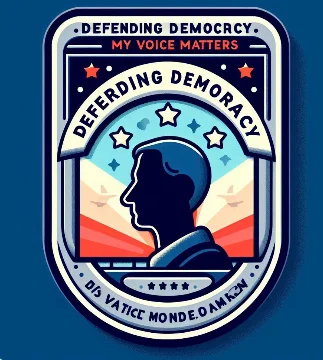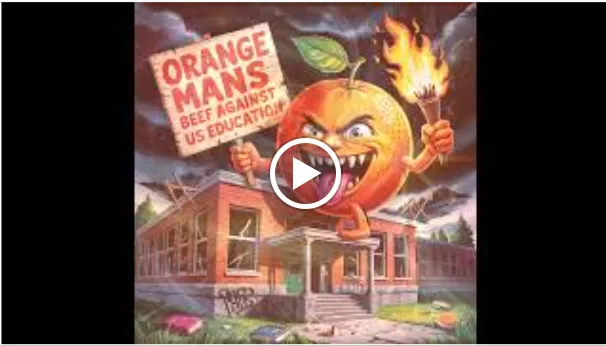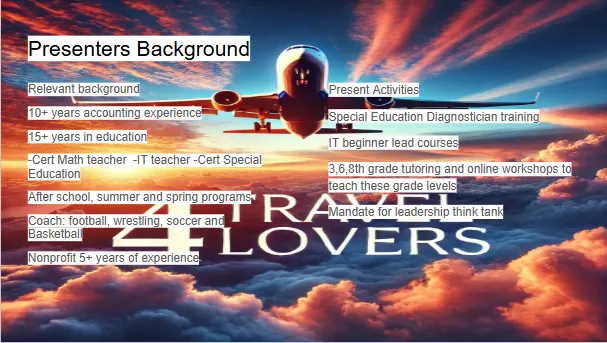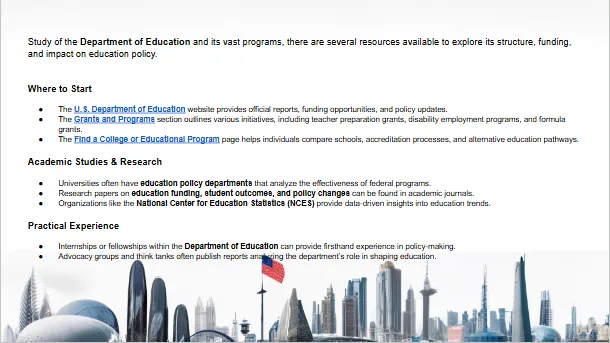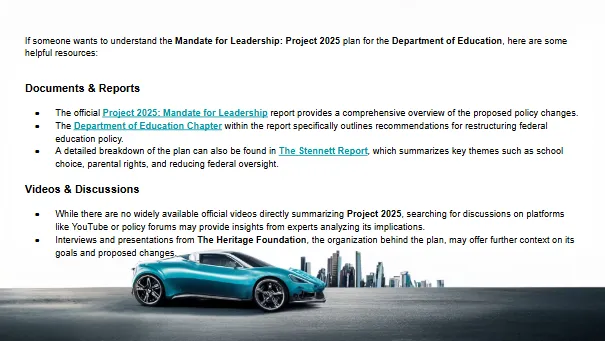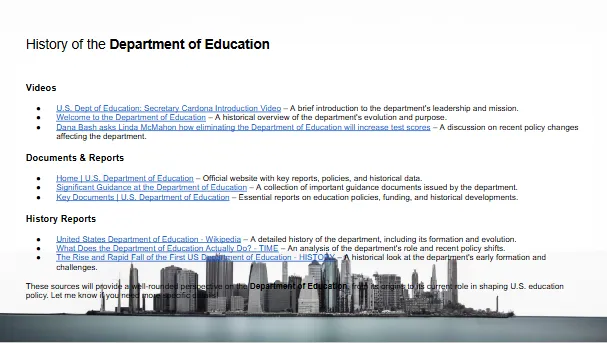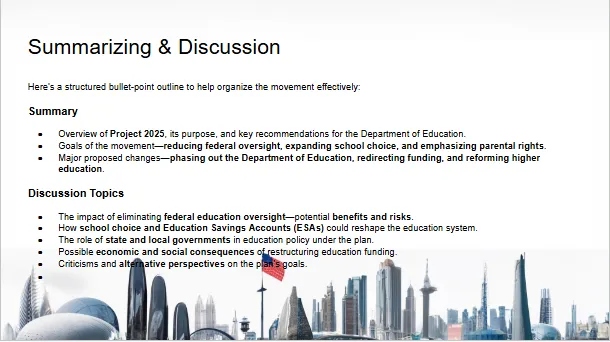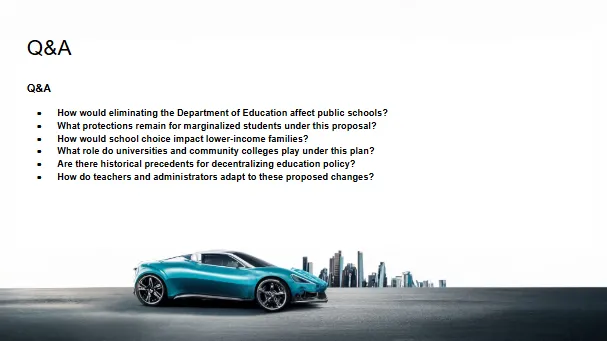UNDERSTANDING THE CONSERVATIVE PROMISE: MANDATE FOR LEADERSHIP
Project 2025 Watch
EXECUTIVE BRANCH
VS
CONSTITUTION
Chapter 25: THE ECONOMY
SMALL BUSINESS ADMINISTRATION
Review
Reading Mandate with Summary
Summary of SBA Analysis and Recommendation Actions
The Small Business Administration (SBA) was originally created in 1953 to support small businesses through access to capital, training, and federal contracts. Over time, its role has expanded, especially in disaster relief efforts such as COVID-19 aid. While some SBA programs, such as the Paycheck Protection Program (PPP), have successfully preserved jobs, they have also been plagued by fraud and mismanagement. The agency’s budget fluctuates based on economic crises, with appropriations often surging during major disasters. Critics argue that the SBA has deviated from its core mission, expanding into politically motivated initiatives and suffering from inefficiencies. To address these concerns, conservative policymakers propose reforms aimed at refocusing the SBA on its original functions, eliminating direct government lending, improving oversight, and modernizing operations through stronger accountability measures.

Mission and Overview
Original Purpose (1953): Created to aid, counsel, assist, and protect small businesses and promote competitive free enterprise.
Current Mission: Help Americans start, grow, and build resilient businesses.
The SBA has become the default agency for disaster loans and major crisis relief (e.g., COVID-19).
Key Programs and Performance
Paycheck Protection Program (PPP): Credited with saving millions of jobs, but also exposed to fraud (estimated 70,000+ potentially fraudulent loans).
Economic Injury Disaster Loan (EIDL): Direct lending model led to $78.1 billion in potentially fraudulent grants/loans (over half of the program's total disbursed funds).
Some programs are effective, but others have generated waste, fraud, and mismanagement.
Historical Evolution and Core Functions
Early Functions (1954): Loan guarantees, access to federal contracts, and business training.
Advocacy Role: Strengthened in the 1970s and 1980s through laws and executive orders:
Chief Counsel for Advocacy (1974)
Office of Advocacy (1976)
Regulatory Flexibility Act (1980)
Trade Facilitation and Trade Enforcement Act (2016)
Current Core
Functions:Access to Capital – Loans, microloans, and equity investment.
Entrepreneurial Development – Training and education.Government Contracting – Ensure 23% of federal contracts go to small businesses.
Advocacy – Voice for small business in federal rulemaking and research.
Budgetary Trends and Political Influence
SBA’s size and scope have fluctuated significantly based on the administration:
Reagan: Over 30% budget cut, even proposed elimination.
Bush (43): Attempted to "do more with less," reversed due to Hurricane Katrina.
Obama: Proposed merging SBA with Commerce Department to streamline—opposed by small-business lobby.
Funding typically spikes during disasters or recessions and shrinks during conservative cost-cutting efforts.
Chapter 25: THE ECONOMY
SMALL BUSINESS ADMINISTRATION
Review
PAGE 745-764
AUTHOR: Karen Kerrigan
AUTHOR BACKGROUND CHECK:
Karen Kerrigan is a prominent figure in U.S. small business advocacy, serving as the President and CEO of the Small Business & Entrepreneurship Council (SBE Council). While she has not held elected office, her influence in shaping small business policy has been significant.
Career in Politics and Public Policy
Kerrigan has dedicated over 28 years to strengthening U.S. entrepreneurship and global business growth. She has provided counsel across the globe via training missions focused on entrepreneurial development, effective advocacy, policy formation, and implementation. Karen testifies regularly before Congress and has served on numerous federal advisory boards representing the interests of entrepreneurs and small businesses.
In 2019, she was appointed by President Donald Trump to the Fulbright Foreign Scholarship Board, reflecting her involvement in shaping international educational and cultural exchange programs
Involvement in Project 2025
Kerrigan contributed to "Project 2025," a policy blueprint developed by conservative think tanks and former Trump administration officials. She authored Chapter 25, focusing on the Small Business Administration (SBA), where she outlined proposals aimed at streamlining SBA operations and reducing regulatory burdens on small businesses.
Stances in Political Movements
Kerrigan's policy positions align with conservative economic principles, emphasizing deregulation, tax reform, and free-market strategies to support small businesses. Her contributions to Project 2025 and her leadership at the SBE Council underscore her commitment to reducing government intervention in the private sector and promoting entrepreneurial growth.
While not a politician in the traditional sense, Karen Kerrigan's extensive work in policy advocacy and her contributions to significant policy initiatives like Project 2025 highlight her influential role in shaping small business policy in the United States.
Summary the pros and cons of the proposed SBA reforms

Pros to the Reform Plan
Eliminates Waste and Fraud – Reducing direct government lending could help curb fraud seen in COVID-era relief programs.
Strengthens Oversight – Mandating compliance with audits and improving safeguards can ensure responsible use of taxpayer funds.
Refocuses SBA on Core Functions – Streamlining efforts ensure resources directly benefit small businesses.
Enhances Transparency – Data security measures and performance tracking promote clearer reporting.
Supports Regulatory Reform – Strengthening the Office of Advocacy may help small businesses push back against excessive federal regulations.
Cons of the Reform Plan
Limits Access to Capital – Eliminating direct lending might make it harder for small businesses to secure funding, especially those without strong banking relationships.
Potential Job Losses – Cutting down SBA programs may impact small businesses reliant on government support.
Political Influence Concerns – Reform efforts could be viewed as limiting access to SBA resources for certain demographic or industry groups.
Bureaucratic Challenges – Restructuring SBA to focus solely on original functions may require extensive administrative adjustments.
Slow Response to Crises – Reducing SBA’s role in disaster relief may hinder rapid aid during future economic downturns or emergencies.

Proposed History of Budget/Loan and Poor Mismanagement
Budget and Loan Program Volatility
SBA’s appropriations vary widely based on economic or natural disasters:
High: $761.9 billion in FY2020 (COVID-19 relief)
Low: $571.8 million in FY2007Much of the volatility is due to supplemental disaster aid and program enhancements.
Since FY2000, SBA's core appropriations have outpaced inflation, even excluding disaster funds.
FY2022 Highlights:$43B in small business funding via 62,000+ traditional loans and 1,200+ SBIC investments.$44.25B in budgetary resources (~0.4% of the federal budget).
History of Mismanagement
SBA has long faced criticism for:
Waste, fraud, abuse, and mismanagement.
Lapses in oversight and personnel competence.
Examples include:8(a) program
Hurricane Katrina disaster funding
COVID-era programs (EIDL & PPP) – significant fraud and oversight failures.
Congressional Republicans have pushed for:
Improved transparency and accountability
Ending mission creep
Reducing structural and reporting deficiencies tied to massive supplemental appropriations.

Governance and Leadership
SBA is led by a Cabinet-level Administrator and Deputy Administrator, both Senate-confirmed.
Other key roles: Chief Counsel for Advocacy and Inspector General.
Mission Creep and Political Targeting
The SBA has allegedly shifted from serving all eligible businesses to selectively supporting politically favored or “disproportionately impacted” groups.
Critics argue “inclusivity” initiatives have become exclusionary.
Notable controversies:
SBA’s request to be a “designated voter agency” under a Biden executive order.
Launching duplicative pilot programs rather than using existing partners.
Continued push for direct government lending, despite risk and inefficiency.
Ongoing use of religious exclusions in loan eligibility, despite proposed rule changes and Supreme Court precedent.
Proposed Conservative Reforms
A conservative administration would seek to:
Refocus the SBA on congressionally authorized, essential functions.Appoint competent leadership to modernize and advocate for all small businesses.Eliminate direct lending and reduce dependency on temporary programs.End waste, fraud, and abuse, particularly in COVID-related programs, and pursue legal enforcement against fraudulent recipients.Promote a resilient small-business supply chain through smart capital access strategies.Ensure non-discriminatory outreach and access for all eligible small businesses, regardless of geography or political designation.
Other Key Points Highlighted in the Mandates Section of SBA
Modernization and Streamlining
A future conservative administration aims to:
Implement nonduplicative, first-come, first-served initiatives.
Use modern technology to streamline operations, outreach, and reporting.
Strengthen the Office of Advocacy with a broader mandate to combat overregulation and quantify the true costs of federal regulation on small businesses.
Accountability and Managerial Practice
The SBA is critiqued for weak internal controls, poor data systems, and lack of performance measurement. Proposed fixes include:
Require performance metrics and internal safeguards to protect taxpayer dollars.
Address IT and data security risks noted in the SBA IG’s October 2022 report.
Mandate SBA compliance with IG and GAO recommendations within 90 days of issuance and maintain ongoing follow-up.
Strengthening the SBA Office of Advocacy
The Office of Advocacy is presented as a potential check on the regulatory state.
Reforms include:
Amend the Regulatory Flexibility Act (RFA):Require agencies to submit rules and regulatory flexibility analyses to Advocacy 60 days before Federal Register publication.
Advocacy would have 30 days to comment, and agencies would need to respond substantively.
Expand regulatory cost analysis to include indirect costs.
Agencies should no longer be allowed to dismiss regulations as having "no significant impact" to avoid review.
Presumptively exempt small businesses from new rules unless Advocacy gives approval.
Increase Advocacy’s budget by 50% (~$4.6 million), enabling hiring of ~25 staff members.
Require agencies to comply with the RFA via executive order, akin to those signed in 2017.Revive regional outreach through roundtables and digital engagement to inform Advocacy's regulatory efforts.
COVID-19 Lending Program Accountability
The SBA's handling of COVID-19 relief programs (PPP, EIDL) remains a major source of concern due to widespread fraud. The roadmap includes:
Conduct a final accounting and aggressively close out fraudulent activity.
Leverage private-sector expertise to accelerate loan program resolution and pursue enforcement.
Investigate and potentially reverse forgiveness of ineligible loans, especially those issued to organizations like Planned Parenthood:
GOP lawmakers allege that Planned Parenthood affiliates exceeded the employee threshold.
Trump-era SBA deemed some affiliates ineligible, but no enforcement actions were completed.
If fraud is discovered:
Reverse forgiven loans if legally possible.
Refer false certifications to the Department of Justice for prosecution.
Key Themes
Refocus on statutory mandates and strip away mission creep.
Reinforce fairness and neutrality in access to SBA programs.
Use the SBA as a tool to challenge federal overreach, not to expand bureaucratic influence.
Understanding what this part of the Mandate means to you?

Damaged System That will take Decades to recover
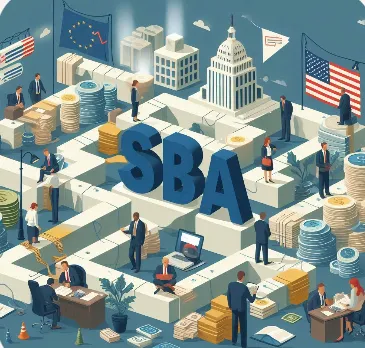
Administrative Hurdles Refocusing the SBA could lead to complex bureaucratic shifts.
Crisis Response Delays Scaling back disaster relief efforts could slow future emergency aid

Political Concerns Reforms may disproportionately affect certain groups or industries.


Job Losses Downsizing SBA programs may reduce employment in supported small businesses.

Limited Access to Capital Eliminating direct lending could hurt small businesses without strong bank ties.


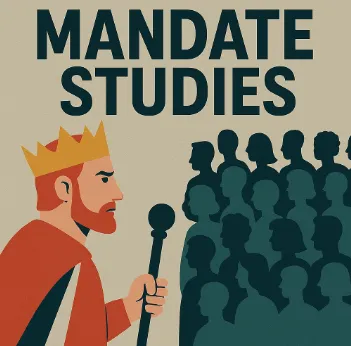
Understanding How the Mandate Effects Our Government by Sections of the Mandate
The following is a breakdown of the 900+ pages in a deeper breakdown of the authors, the standards, diagnosing the reforms, deep understanding of what our tax payer dollars provide and a deeper understanding of the deep Right. We do not have a deep Left issue, we have a issue with those who are lacking credibility with plans that are outlined in black and white. Instead of just living through the next 4 years, learn from America's Mistake for allowing nepotism to override political career morally sound individuals to decide people's fate versus those who are born of privilege. In these library of collective thoughts please feel free to join the movement...
Monitoring the Mandate by diving into the authors, contributors and current implementation of the project 2025 mandate created in 1978 first ran by Ronald Raegan with the Heritage Foundation.
Understanding the fundamentals of the Mandate by diving into the theories, philosophies and breakdowns from the section "Taking the Reins of Government" with break downs from
Understanding the fundamentals of the Mandate by diving into the theories, philosophies and breakdowns from the section "The Common Defense" with break downs from:
Understanding the fundamentals of the Mandate by diving into the theories, philosophies and breakdowns from the section "The General Welfare" with break downs from:
Understanding the fundamentals of the Mandate by diving into the theories, philosophies and breakdowns from the section "The Economy" with break downs from:
Understanding the fundamentals of the Mandate by diving into the theories, philosophies and breakdowns from the section "Independent Regulatory Agencies" with break downs from:
Understanding the fundamentals of the Mandate by diving into the theories, philosophies and breakdowns from the section "Onward" with break down and final thoughts on project 2025:
Understanding the Mandate , What it means to you and how can we grow from learning it.

Stand up for US Department of Education Against Project 2025 Mandates
The future of education is at a crossroads, and the Department of Education plays a vital role in ensuring access to quality learning opportunities for all. However, proposed policies threaten to dismantle essential programs, impacting students, teachers, and communities nationwide. By joining together, we can advocate for a strong, well-supported education system that prioritizes inclusivity, innovation, and success. Whether through raising awareness, participating in discussions, or pushing for informed policies, every effort counts in safeguarding the integrity of public education.
This is a call to action for educators, advocates, and concerned citizens to come together and make a difference. Through collective knowledge and active engagement, we can challenge harmful reforms and champion initiatives that strengthen the Department of Education. The upcoming virtual workshop on April 21-23 will provide key insights into these urgent matters, equipping participants with the tools to take action. Let’s stand for the future of education—because protecting learning today ensures a brighter tomorrow for all. Join us in this mission and help drive meaningful change!
Power Point For 3 Day Workshop 6pm-8pm April 21-23, 2025
Understanding the Mandate Which Touches the Following
The following is a breakdown of the 900+ pages in a deeper breakdown of the authors, the standards, diagnosing the reforms, deep understanding of what our tax payer dollars provide and a deeper understanding of the deep Right. We do not have a deep Left issue, we have a issue with those who are lacking credibility with plans that are outlined in black and white. Instead of just living through the next 4 years, learn from America's Mistake for allowing nepotism to override political career morally sound individuals to decide people's fate versus those who are born of privilege. In these library of collective thoughts please feel free to join the movement...
Executive overreach redefining the Constitution and it's relationship with the other branches
The Common Defense Outlining the Agency Roles
US Press
International Press
The Economy Outlines the Roles
Case for Fair Trade
Case For Free Trade
The Independent Regulatory Agencies Outlines the Roles For Agencies
The propose for this Summary is in an attempt to allow others to understand that this mission statement known as the Mandate is different than just a political movement. This movement purpose is not meant to help those who it claims to and we would argue that their Mandate has and will do damage to our world. This has been a journey of exploration, interesting, hypocritical, short sighted and often times cruel in nature.
Small Call to Action Headline
Small Call to Action Headline
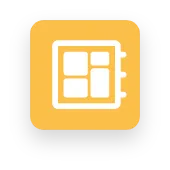
Website Development
Custom Website DesignResponsive Web DevelopmentUser Experience (UX) DesignE-commerce Website DevelopmentContent Management System (CMS) Integration

Dev Development
Full-Stack DevelopmentFrontend DevelopmentBackend DevelopmentAPI Development and IntegrationDatabase Design and Management

Scrum Master Services
Agile Project ManagementScrum Master ConsultationSprint Planning and ExecutionTeam Collaboration and CoordinationContinuous Improvement Strategies
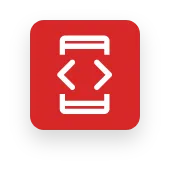
Mobile App Design
iOS App Development
Android App Development
Cross-Platform App Development
Mobile App UI/UX Design
App Maintenance and Support
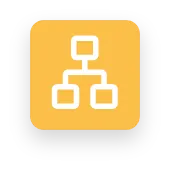
Online Marketing
Search Engine Optimization (SEO)Social Media MarketingContent MarketingEmail MarketingPay-Per-Click (PPC) Advertising
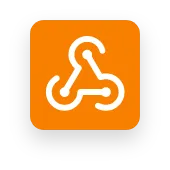
Drone Services
Aerial Photography and VideographyDrone Mapping and SurveyingInspection and Monitoring ServicesGIS (Geographic Information System) IntegrationCustom Drone Software Development
“ eMillion Concepts. eMillion People. eMillion Solutions.”
© 2024 E-Millions Consulting Services - All Rights Reserved,
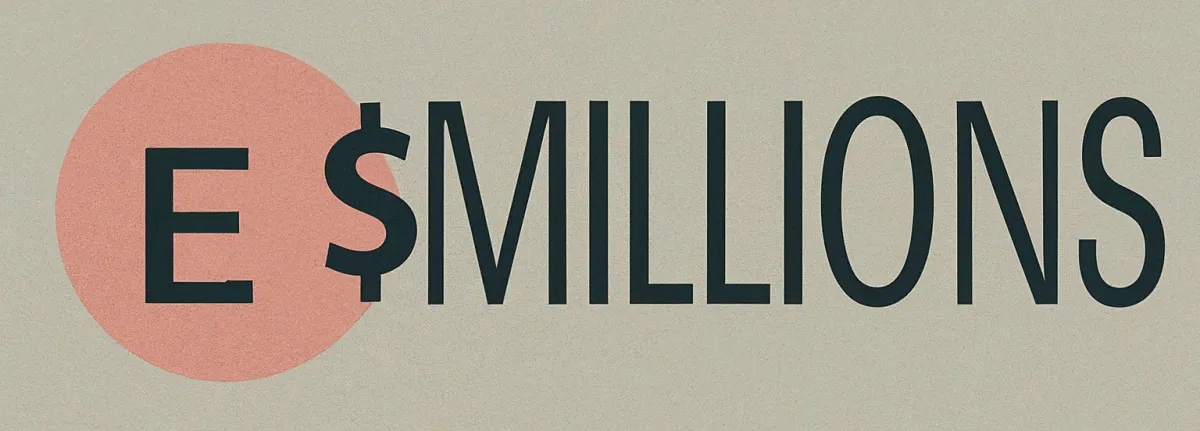
etechmilli@gmail.com
(404) 723-3940
© 2025 Company Name - All Rights Reserved, consectetur adipiscing elit. Maecenas commodo suscipit tortor, vel tristique sapien
